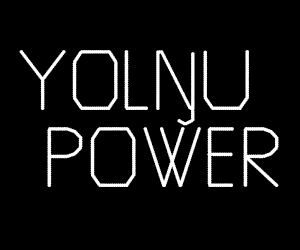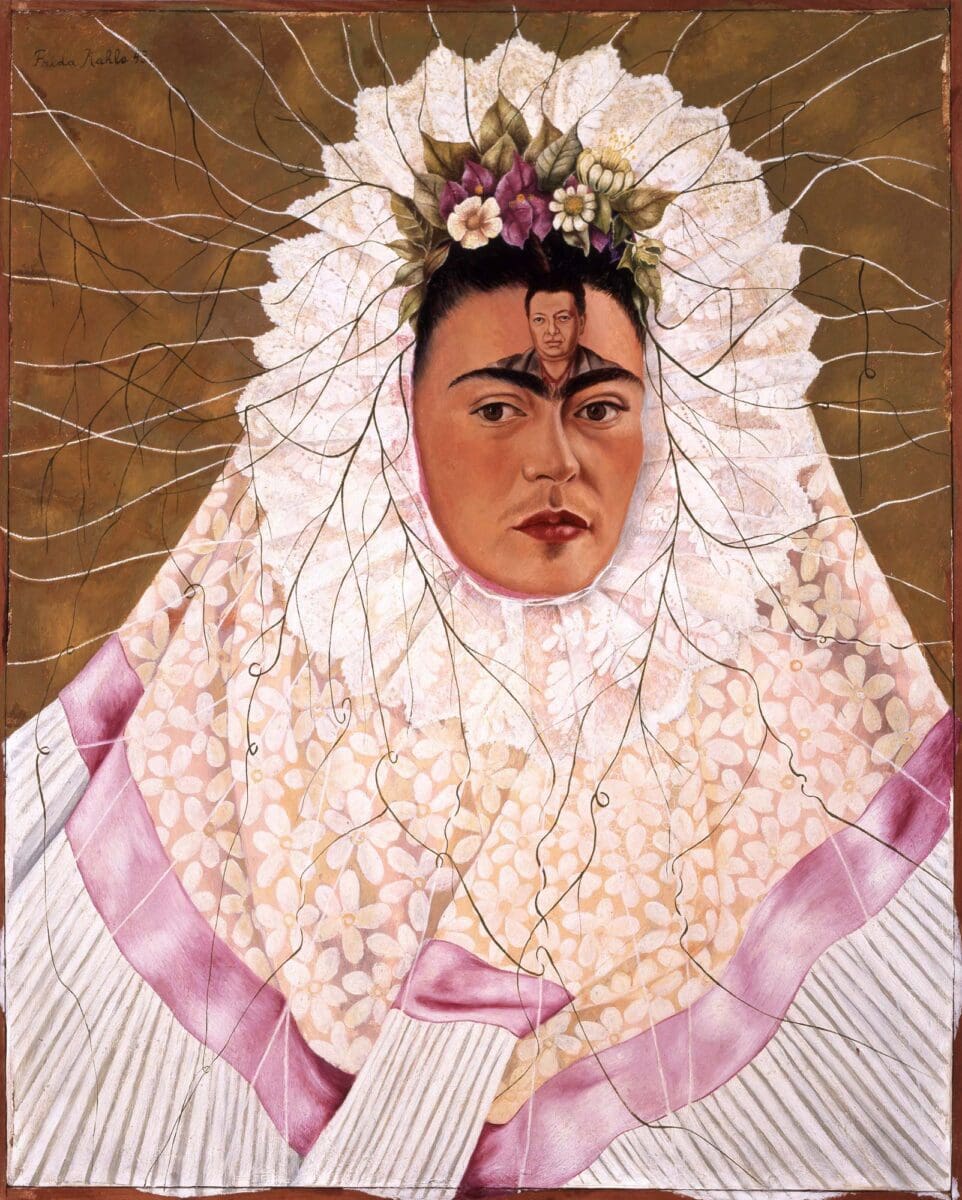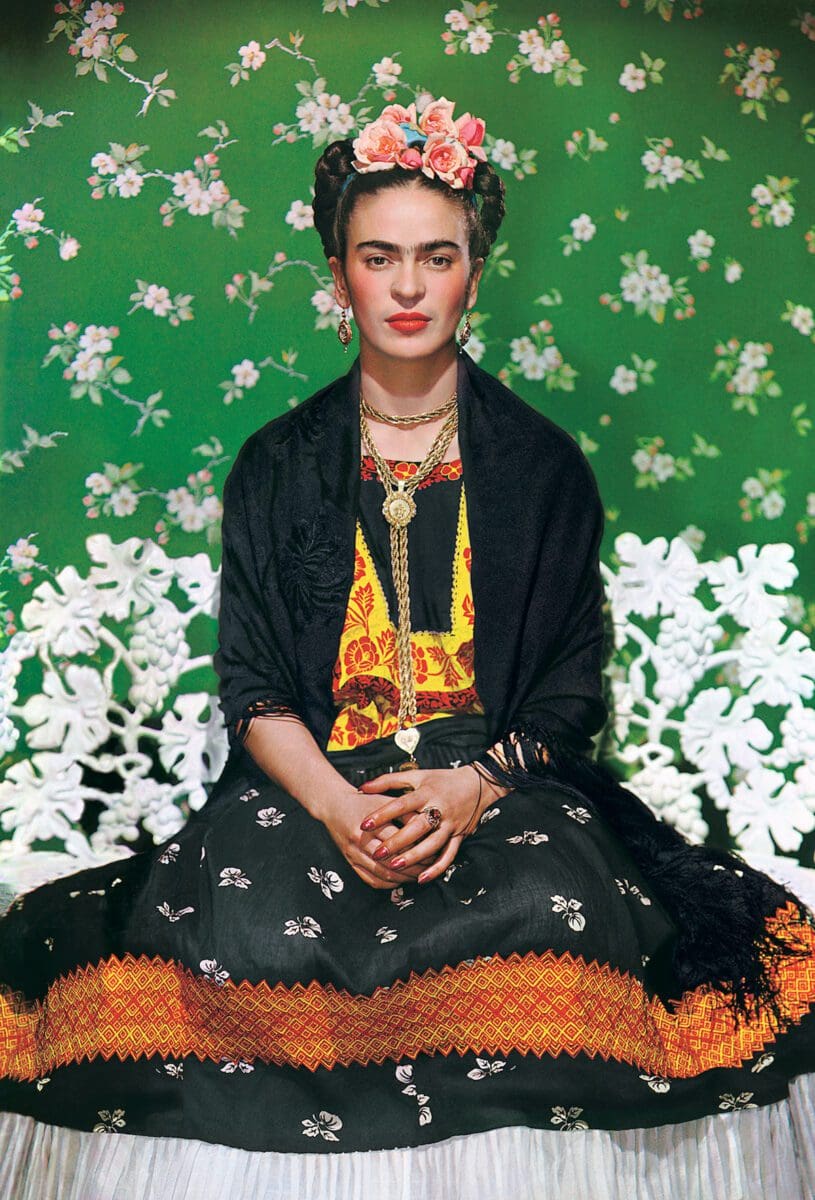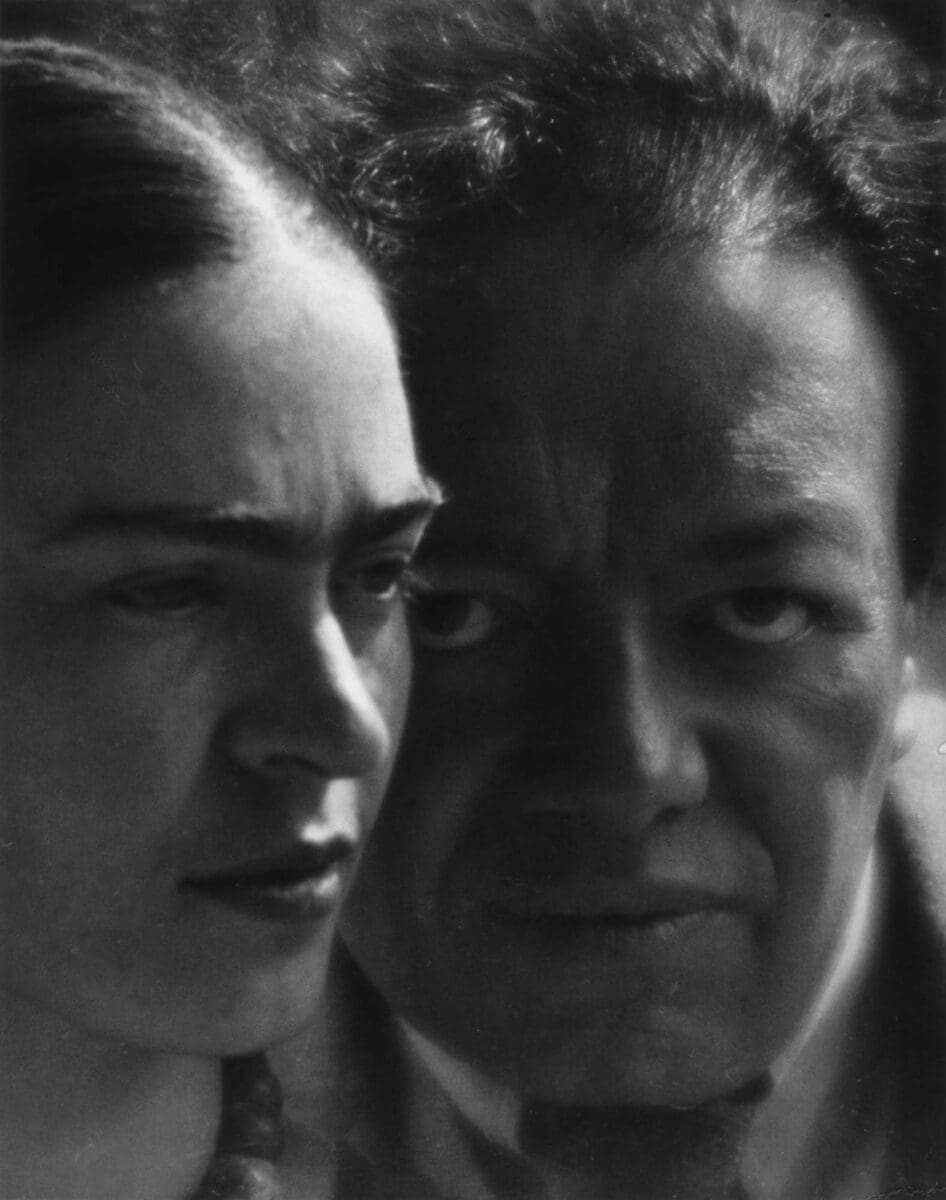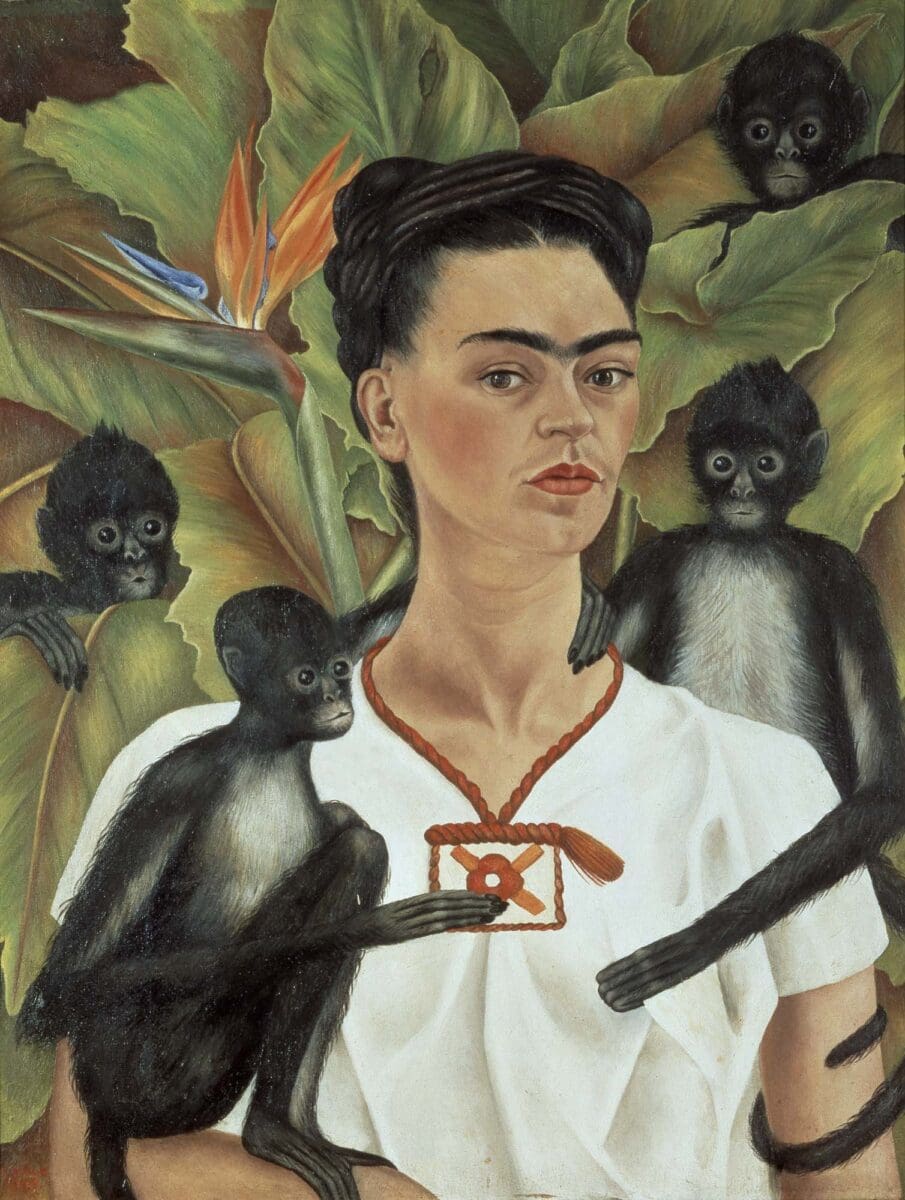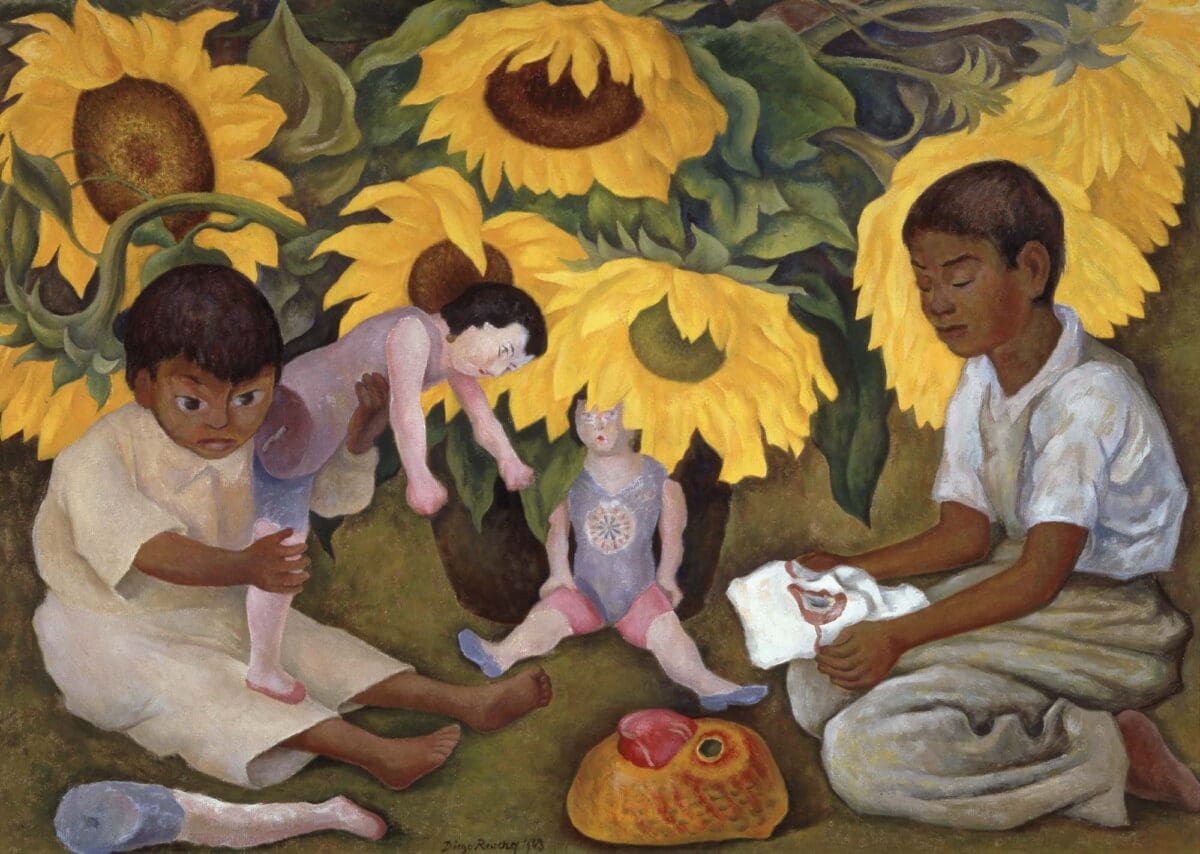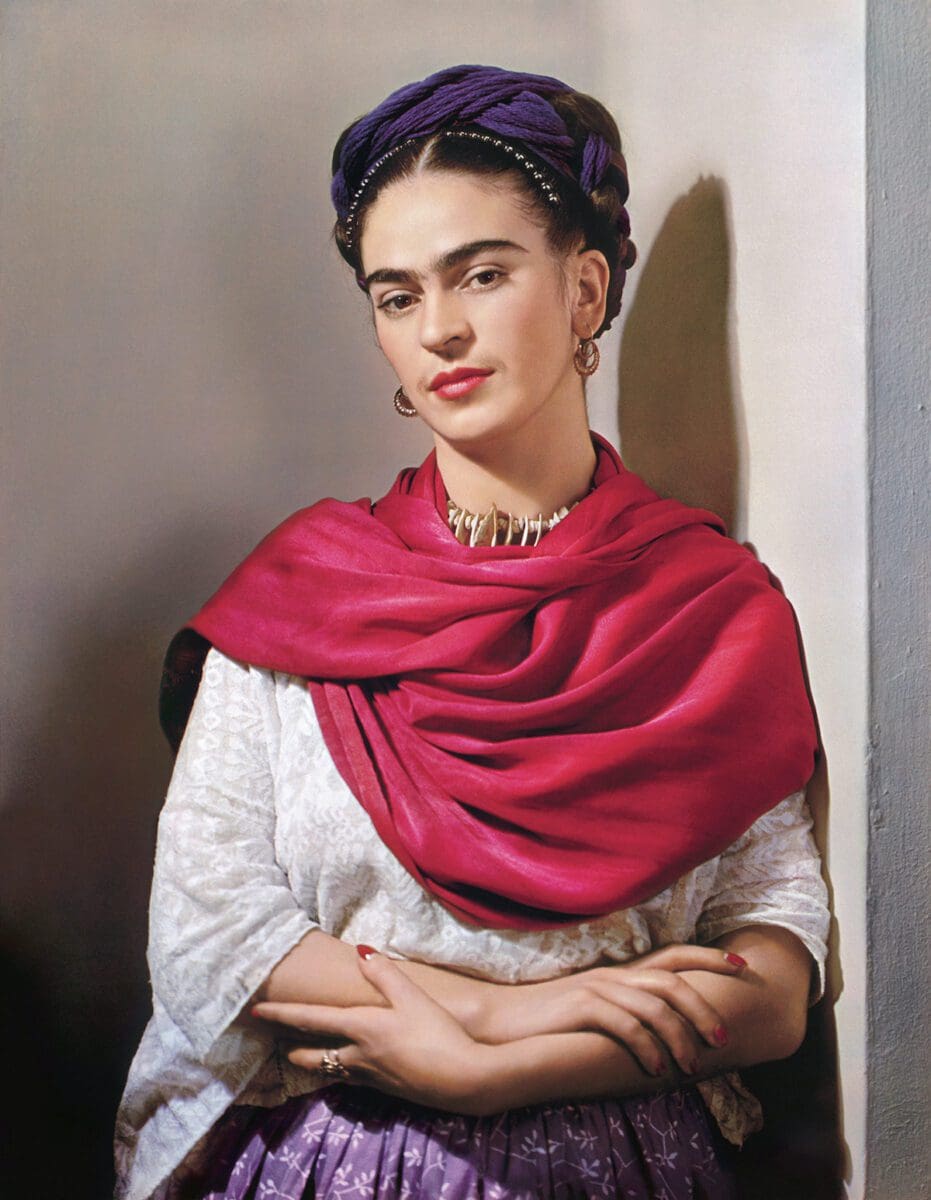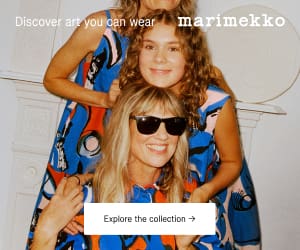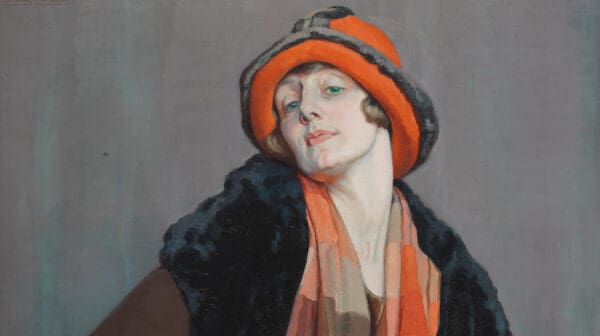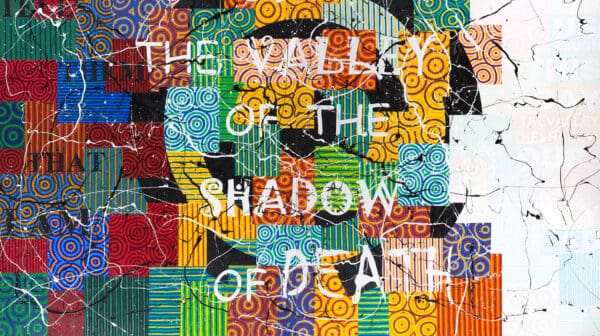Frida Kahlo was three years old when the Mexican Revolution began in 1910, but throughout her life she often said she was born in 1910 in order to directly, and symbolically, associate herself with the revolution. Of course, she did not know that the cultural impact of her life and work would stand so impermeable that she needn’t align herself with other moments of significance—and that her work, alongside that of Mexican modernists, would be its own revolution.
Kahlo is almost indisputable. You would be hard-pressed to find a detractor. There are those that find her omnipresence in arts and culture saturating, but that’s hardly a criticism of the woman or her work. And honestly, I really did try to not make this article a love letter to her, mainly due to said saturation, but I sense my devotion will pierce through.
“One of Kahlo’s exhibiting paintings is Diego on My Mind (Self-Portrait as Tehuana). This, like many of her works, is something of an ode to her husband, explicitly in the placement of his image on her forehead—but also in the traditional garment she wears.”
The first time I saw a Kahlo retrospective (of sorts), was at the New York Botanical Gardens in the Bronx in 2015. Her works aren’t often shown in Australia, and neither are those from any of her Mexican modernist counterparts. A lot is held in permanent, often private, collections. One of the exceptions is the Jacques and Natasha Gelman collection which, without a permanent home, is the most frequently touring exhibition that contains a significant amount of Mexican artwork, by Kahlo and her husband, the artist Diego Rivera, alongside their contemporaries, including Manuel and Lola Álvarez Bravo, Miguel Covarrubias, María Izquierdo, Carlos Mérida, David Alfaro Siqueiros, Yasumasa Morimura and others. This is the collection that the Art Gallery of South Australia (AGSA) is showing for Frida & Diego: Love & Revolution, which considers Kahlo and Rivera’s relationship with each other, as well as where their art and lives sit within Mexican cultural history.
One of Kahlo’s exhibiting paintings is Diego on My Mind (Self-Portrait as Tehuana). This, like many of her works, is something of an ode to her husband, explicitly in the placement of his image on her forehead—but also in the traditional garment she wears. While both Kahlo and Rivera were staunch communists and political activists, Rivera’s post-revolutionary reaffirmation of Mexican Indigenous culture was certainly an influence on Kahlo, who’s work saw a notable increase in traditional Mexican imagery and dress after she met him. It’s more than a coincidence that the outfit she wears while brandishing her lover’s image on her body is ‘Diego approved’.

The image of Rivera firmly and devotedly imprinted on Kahlo’s forehead bears an unsettling comparison to a recurring motif in her paintings of the third eye, which she places on Rivera’s forehead. This can be seen in another of her paintings in the show, The Love Embrace of the Universe, the Earth (Mexico), Diego, Me and Señor Xolotl. She uses the third eye to represent an all-seeing and outward vision of the world. Rivera is always looking outwards, while she is looking at him.
The Love Embrace also shows Kahlo with a wound on her chest, pouring blood out onto the naked baby that is Rivera, echoing a diary entry she once made: “At every moment he is my child, my child born every moment, diary, from myself.” At another time, she wrote, “Why do I call him My Diego? He never was nor ever will be mine. He belongs to himself.”
Kahlo experienced much pain and suffering in her life. The physical pain is well-documented, both by her and her biographers: polio, amputation, a horrific bus accident in her teens that resulted in lifelong injuries. Then there’s the emotional suffering that accompanied her chronic pain, amplified by three miscarriages and the devastation of never being able to conceive a child. And then there is Rivera. On the one hand her biggest supporter, but simultaneously the cause of great heartache through his chronic infidelity, most excruciatingly with her favourite sister, a love affair that resulted in the couple’s temporary divorce.
“Mexican Modernism is, in many ways, worlds apart from Australian culture, landscape, and experience. And yet we’ll each find our own resemblances, whether aesthetic, political, or personal.”
The depiction of suffering in her work is one of the things that makes Kahlo so beloved and beguiling. The visceral depictions of the body, its failings and endurance, coupled with the deeply personal yet universally relatable (especially to women) themes of love and loss, hit a nerve that runs deep.
Even so, AGSA curator Tansy Curtin notes a less obvious, at least in the Western world, cultural milieu to Kahlo’s work: that of the Mexican modernists. Curtin describes how, “Frida and Diego are the two key artists, but they lead into this much bigger story. It’s a story about Indigenous cultures, colonisation, cultural destruction, cultural resilience, and cultural celebration through art.”
Mexican Modernism is, in many ways, worlds apart from Australian culture, landscape, and experience. And yet we’ll each find our own resemblances, whether aesthetic, political, or personal. In Self-Portrait with Monkeys, Kahlo paints herself in a tropical scene, surrounded by her monkeys (it’s said that she referred to her various pets as the children she couldn’t have). Poking out from behind her is a bird of paradise. I can see a similar one out my window—they grow very well here.
Frida & Diego: Love & Revolution
Art Gallery of South Australia
(Adelaide SA)
On now—17 September

